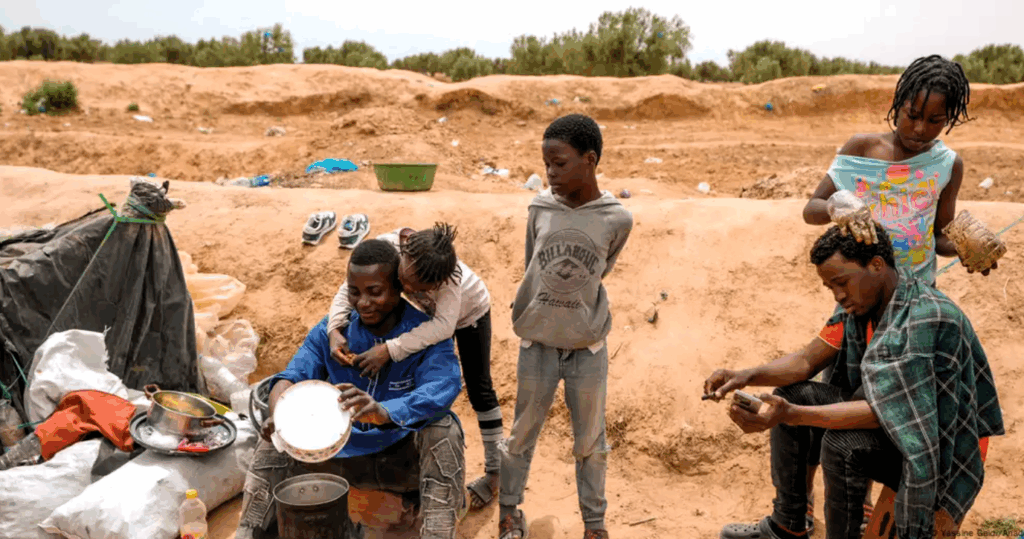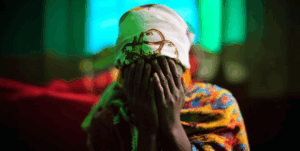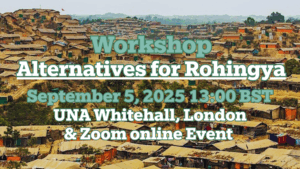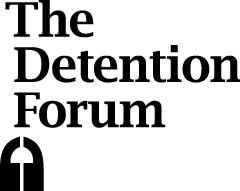
North Africa has become an increasingly hazardous region for refugees and other migrants. This blog examines the many dangers confronting recent arrivals in the region, focusing on Europe’s role in formulating policies that involve the inhumane treatment of foreign nationals.
Context
Expulsions to remote desert locations. Interceptions at sea and forced returns to unsafe countries. Incarceration in abusive detention centres. Exploitation and abuse at the hands of unscrupulous officials, employers, and human smugglers.
These are some of the risks faced by refugees and other migrants who make their way to North Africa. Many originate from unstable countries elsewhere on the continent and most hope to reach Europe by crossing the Mediterranean Sea.
The sections that follow provide a country-by-country summary of recent developments in the region, highlighting how the EU’s border controls have been extended into North Africa via migration deals explicitly intended to prevent and deter people from reaching Europe.
Algeria
Although Algeria has historically taken a distanced approach to formal EU migration deals, it remains a significant actor in the region’s containment landscape. The state’s authoritarian governance structure, with limited space for dissent or civil society activity, facilitates opaque deportation practices and intense border surveillance.
Due in part to its longstanding conflict with Morocco over Western Sahara, and more recent tensions with southern neighbours, Algeria has a strong focus on sovereignty and security. While it has long hosted large numbers of Sahrawi refugees and migrants from the Sahel and West Africa, it lacks a national asylum framework to ensure the fair and consistent treatment of newer arrivals.
The most egregious outcome has been the mass expulsion of sub-Saharan Africans toward the Niger border. According to the NGO Alarme Phone Sahara, around 30,000 refugees and migrants, including many women and children, were deported to the desert in 2024. “Algerian security forces,” it says, “regularly carry out raids and mass arrests at the places where migrants live and work.”
In April 2025, Algerian authorities rounded up more than 1,800 foreign nationals in cities across the country, dumping them at a remote desert area known as Point Zero. Many subsequently moved on to the Nigerien border town of Assamaka, where around 3,000 earlier deportees had already gathered.
While official EU funding for migration control is lower in Algeria than in other North African countries, informal cooperation and policy alignment have enabled Algeria to play an increasingly important role in the region’s migration control architecture.
Egypt
The March 2024 Strategic and Comprehensive Partnership between the EU and Egypt represents a particularly ambitious iteration of Europe’s externalization strategy. Valued at €7.4 billion, including €200 million earmarked for migration control, it also advances cooperation on border surveillance, returns, and legal migration pathways.
Few people now attempt the long sea crossing from the Egyptian coast to Europe due to intense patrolling by the Egyptian Coast Guard and strict anti-smuggling laws. As a result, those seeking to travel irregularly to Europe from Egypt usually do so via Libya.
With a struggling economy, authoritarian governance, and a large population of Sudanese refugees who have minimal integration or resettlement opportunities, there is EU concern that more of Egypt’s residents will seek to migrate to Europe.
Egypt is well positioned to exploit this concern. Although involved in drafting the 1951 Refugee Convention, it has never ratified it. The state provides limited services to its own citizens and even fewer to refugees — yet it can use the threat of mass departures as leverage to extract diplomatic and financial concessions from Europe.
Libya
Libya is the clearest and most notorious example of how the EU’s externalization agenda endangers refugees and migrants. The EU has invested heavily in training, equipping, and sharing intelligence with the militia-linked Libyan Coast Guard, despite clear evidence of its abuses.
Those intercepted at sea are routinely returned to Libya and detained in facilities where torture, forced labour, and sexual violence are widespread. Other migrants are kidnapped on the streets, ransomed, or forced onto unsafe boats.
The absence of stable governance in Libya has enabled the EU to outsource its migration controls to militias, thereby avoiding legal liability while enabling abuses that violate international law.
Morocco
Morocco has become a key EU partner in migration control, aided by its weak asylum system, lack of human rights safeguards, and authoritarian governance.
In 2024, Moroccan authorities claimed to have prevented 80,000 irregular migration attempts. But this figure hides widespread racial profiling, pullbacks at sea, and violent evictions.
Since 2021 — when 10,000 people crossed into the Spanish enclave of Ceuta — the EU-Morocco partnership has intensified. In 2022, at least 23 migrants were killed by Moroccan forces at Melilla.
In exchange, the EU supplies Morocco with policing equipment, development aid, and diplomatic backing — especially in its long-running dispute with Algeria over Western Sahara.
Niger
Despite being landlocked and far from Europe, Niger is central to the EU’s migration control strategy. Its city Agadez is a key hub on the trans-Saharan migration route.
Since 2016, EU funding via the EUTF supported anti-smuggling campaigns that disrupted local economies and criminalized migration. These efforts hurt traditional livelihoods and led to banditry and migrant abandonment in the desert.
In July 2023, a military coup brought this to a halt. Anti-smuggling laws were repealed, routes reopened, and the government shifted away from EU cooperation.
By September 2024, 1,500 migrants at a UNHCR centre outside Agadez launched a peaceful protest against poor conditions and lack of resettlement. Their slogan: “We don’t want to stay here any more.”
Tunisia
Tunisia intensified its EU migration cooperation under a July 2023 Memorandum of Understanding, in return for financial incentives.
This has coincided with increased repression: racism against sub-Saharan Africans, forced evictions, desert expulsions, and restrictions on NGOs.
Despite democratic hopes after Tunisia’s revolution, EU support has empowered the government’s authoritarian turn and eroded refugee protection.
In April 2025, Tunisian authorities burned tents in a migrant settlement near Sfax, displacing around 7,000 people.
Hostile Environment
North Africa has become increasingly dangerous for refugees and migrants — a region marked by death, abuse, and trauma.
As shown in this blog, migration governance here is shaped by colonial legacies, authoritarian rule, poverty, and xenophobia — all exploited by the EU’s border agenda.
European states claim to uphold democratic values and humanitarian law. Yet in North Africa, they fund, support, and enable abusive regimes to stop people in need of protection.
A more humane approach is urgently needed.
About the authors:
Daisy Vaughan Linero is a Barcelona-based independent consultant specializing in refugee and migration issues.
Jeff Crisp is a volunteer with UAI and a Research Fellow at the Refugee Studies Centre, Oxford.
The opinions expressed in this blog are those of the authors and do not necessarily represent the views of United Against Inhumanity (UAI).











